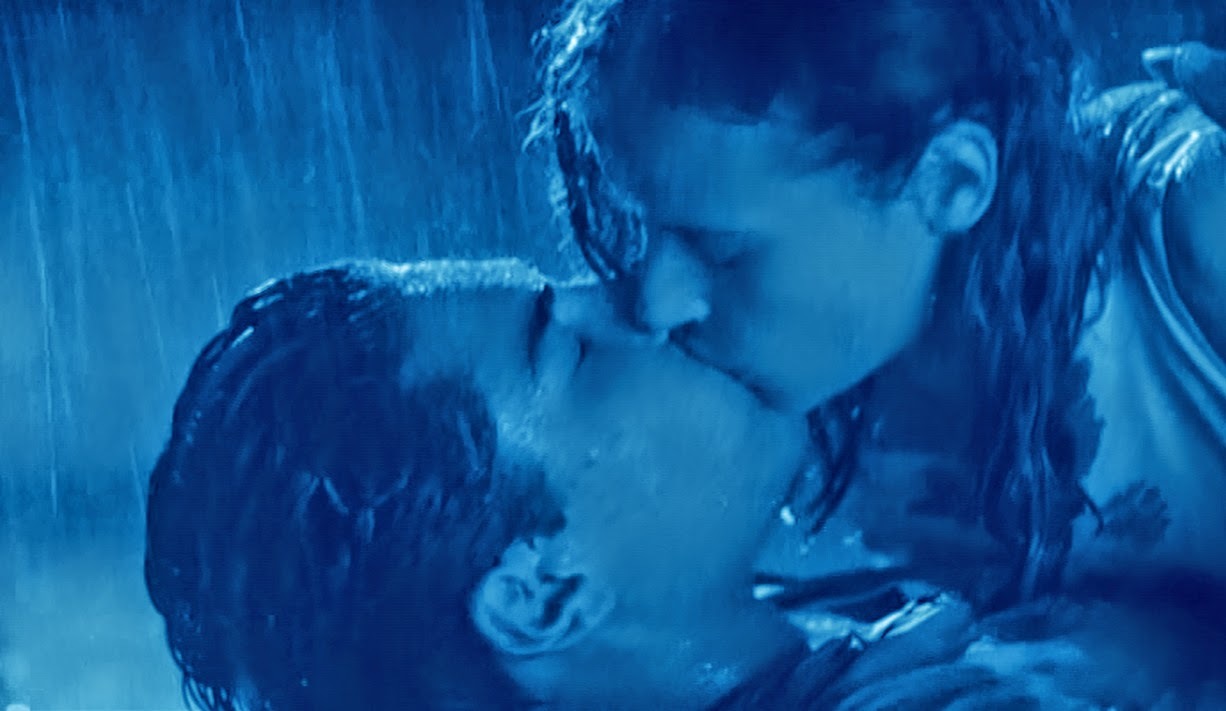
It is the summer of 1979. I am sitting in a line in front of the Grand Theater. The Grand was a twin theater. The lower theater held 650 seats, and the upper 400 seats. It was built at the turn of the 20th century and it oozed history and tradition. That evening people in the line are excited, sharing what they have heard by word of mouth regarding the movie they are about to see. Some talk about how much their friends were scared when they saw it, others feign a depth of cinematic knowledge and tell their companion how this movie was the retelling of an acclaimed student movie. The usher opens the door and the eighty plus people who were waiting to get in approach the box office. The excitement heightened.
The movie is screening in the former upper balcony, I climbed the stairs and walked through the velvet-curtained doorway. It is obvious the auditorium is going to be packed. People are still talking about the movie. I sit down and wait. My friends and I are talking about the movie and movies in general. The lights dim and a hush falls over the audience. Two trailers play and then the feature begins.
When a Stranger Calls, directed by Fred Walton flickers on the screen and pull me and the audience around me into a highly frightened state. It was probably the most frightened I have ever been in a theater. Made for a budget of $1.5 million, the movie grossed $21 million at the box office. The movie has developed a large cult following over the years because of the first 20 minutes, now regarded by anyone who has any cinematic knowledge as one of the scariest openings in horror movie history. The opening sequence was highly influential for the horror genre and laid the foundation for future horror works.
What gave this movie life theatrically was the simple and pure fact that audiences really were fans of the movies back then. Movies were a social event, a happening and a foundation of the culture that existed at the time. Movies were important. Stars Wars signaled the end of the New Hollywood and volcanically altered the cinematic terrain. There were magazines on every aspect of the movies, from Photoplay to Fangoria to Starlog to Cinemaquest, each dealing with a distinct genre of the movies or a technical aspect. Movies dominated the cultural fabric of North America.
There was great diversity on what was played, drive-ins played B exploitation fare, arthouses played movies from the Asian, European, African and South American continents. In one week in any large American city, you could see Dona Flor and Her Two Husbands, a Brazilian comedy or the latest from that master of Hong Kong cinema, Tsui Hark. Movies were vital and electric and most importantly they excited audiences. The diversity of cinema was its strength. While Superman and other superhero comic-derived movies did business, they certainly did not dominate the box office. At that time diversity was indeed the movies strength and the reason why people got excited by both the spectacle and the intellectual exercise that can be cinema.
It wasn’t until Christopher Nolan’s The Dark Knight saw its release did superhero movies launch their bid for the dominance of movie screens. This began the steady and fixed decline of the diversity of the screen. It marks a turning point in the way studios conceived of its product offerings and it laid out the march towards oblivion.
Fast forward to 2019, movies are broken. While box office has had its ups and downs, but there is something different about the challenges of today. Today, clearly it can be difficult to tell the difference between struggle and outright decline and a possible collapse. The 2019 box office is down nine percent from last year, and soon the theaters’ with Netflix battle will be joined by Disney+, Apple+, WarnerMedia, and many many more. Expect all the major gaming publishers to join the streaming fray.
It is now more than obvious that movie theaters can’t survive just on superhero engorged releases, and that’s a problem for the movie industry, often the large budget Hollywood tent-poles are increasingly eliminating market space for the smaller more diverse movie. Superhero blockbusters can easily be equated to anabolic steroids. You get big fast but the reliance on them causes kidney disease, heart disease and the weakening of the immune system, The theater may rejoice regarding the box office for two or three weeks, but then reality cruelly descends upon them. The Marvel franchise is short term gain and long term agony.
Now some leadership is being shown from a more than a surprising source, AMC.
The good folks at AMC are launching AMC Artisan Films. This effort is seeking to boost movies that might have trouble getting market share as moviegoers routinely choose Marvel and Pixar movies over a more diverse type of movie. The juggernaut of movies such as “Avengers: Endgame” has made it impossible for smaller movies to attract attention. According to AMC, a movie that gets the AMC Artisan Films seal is “an artist-driven, thought-provoking movie that advances the art of filmmaking.” The program will begin with Working Title and Universal Pictures’ Danny Boyle-directed comedy “Yesterday,” which is expected to open with a once great and now mediocre $10 million weekend.
This effort by AMC evolved out of discussions between the circuit and the Directors Guild Of America. It’s more or less a band-aid, but at least it is something.
It is time for theaters to diversify and in a big way. It is also imperative that the fandom behind movies get re-ignited. This is a war that has to be fought community by community. NATO and the MPAA are convoluted in their loyalties and cannot through their outlook provide leadership. We need to make the American public fall in love with movies and movie going again.
And it has to happen now.

